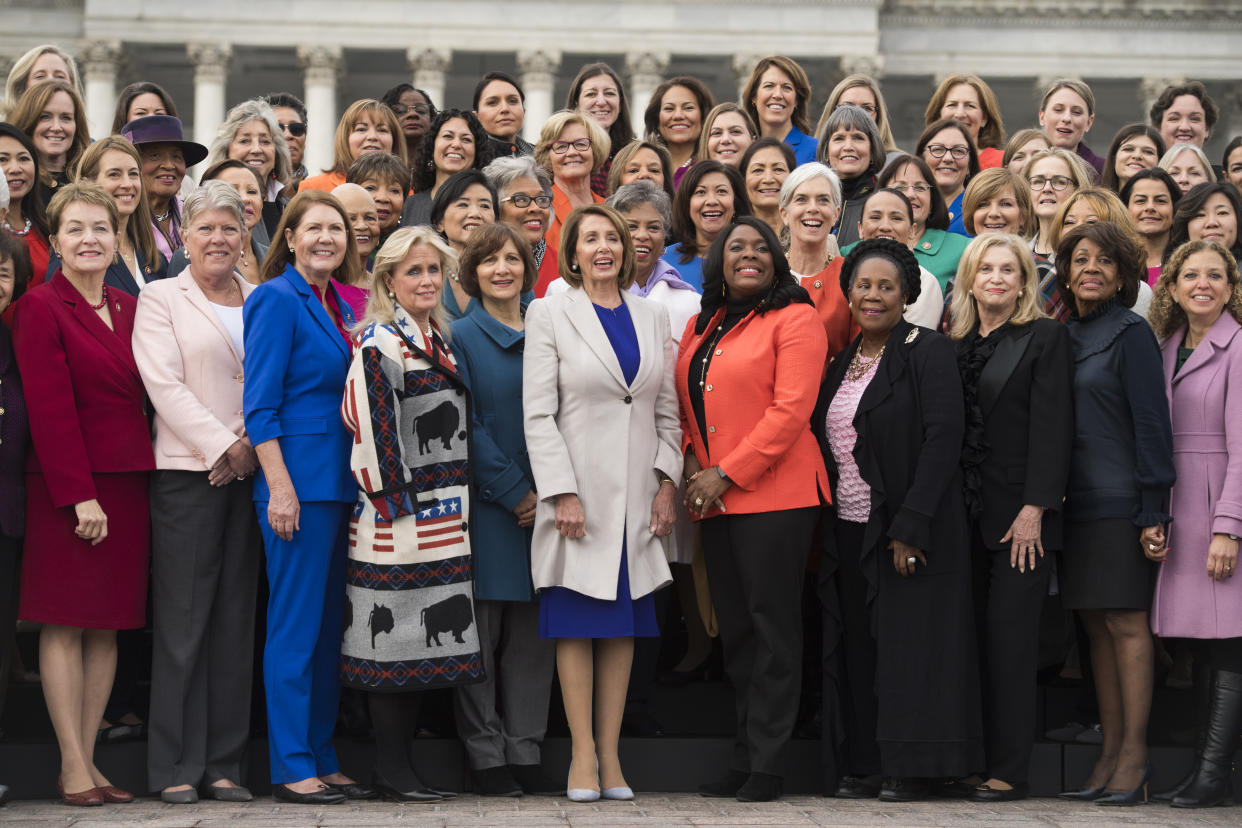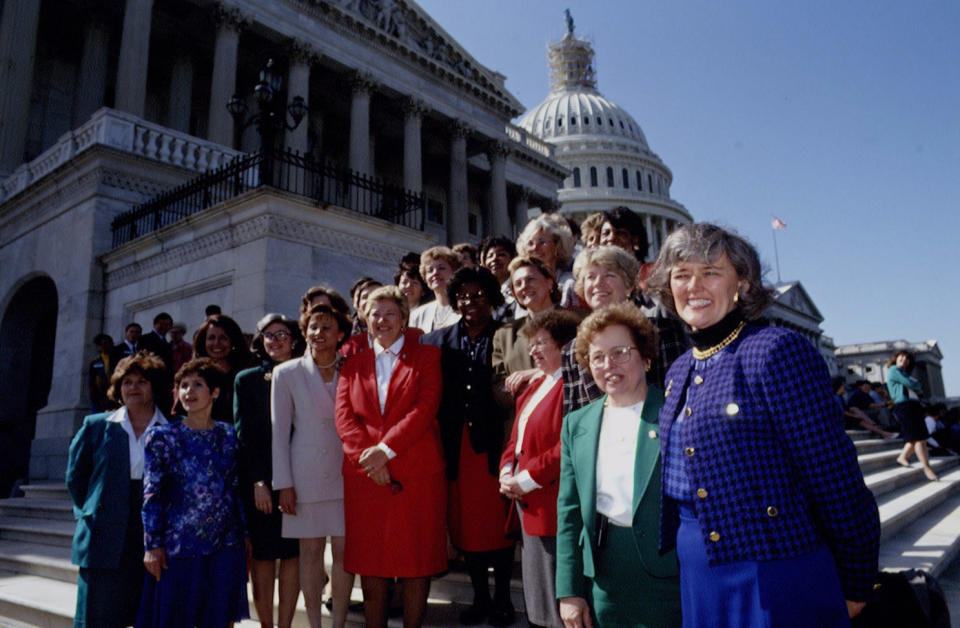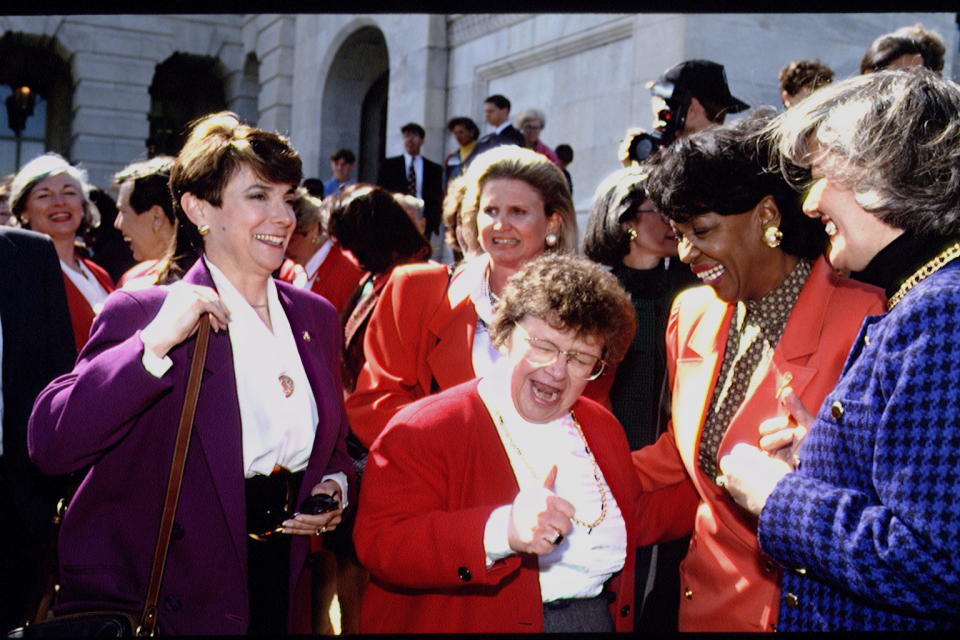Year of the Woman 2.0: See all those elected to the House, then and now

First 1992 went down in history books as “Year of the Woman” — and now it’s joined by 2018, as both represent a period in which a record number of American women who were fed up with status quo ran for public office — and won.
Now, as Congress ushers in the most racially diverse group of representatives and the largest group of women ever elected, MAKERS reflects on the Year of the Woman, then and now.
Year of the Woman: 1992

The women elected in the 1992 midterm election were largely galvanized by the contentious 1991 Senate hearings, when Anita Hill brought forth allegations of sexual harassment against Supreme Court nominee Clarence Thomas. Enraged by the treatment of Hill by the all-white male Senate Judiciary Committee, American women turned up on the ballot and at the polls in record numbers.
“They attacked Anita Hill and said horrible things about her. Working women said, ‘Where are the women on that committee, that understand what it is to be a woman in the workplace and be sexually harassed?'” says Ellen Malcolm, founder of EMILY’s List, a political action committee that helps elect pro-choice Democratic women.
“All of a sudden, we started getting inquiries, checks, contributions, telephone calls from women across the country,” Malcolm tells MAKERS.
Then, on Election Day in 1992, the votes came in: Four women were elected to the Senate, including the first African-American woman, Carol Moseley Braun, 24 women were elected to the House. At the time, this marked the most women ever elected in a single election year, catalyzing a period of “unparalleled advances for women in Congress.”

Year of the Woman in 2018

Now, following the feat of women shattering glass ceilings and achieving many historic firsts this past midterm election, 2018 is being lauded as Year of the Woman 2.0.
It was a clear reaction to possibly the most divisive election of our time, during which a man without any prior political experience — but with multiple allegations of sexual assault and harassment (and a recording of him bragging about grabbing women “by the p—-y” ) — was elected president.
Who runs the World? GIRLS do!!! Democratic Women of the 116th Congress! #girlpower #BlackGirlMagic pic.twitter.com/MMsPvPtkHJ
— Rep. Terri A. Sewell (@RepTerriSewell) January 4, 2019
As Donald Trump started a tumultuous four-year term that would upend American politics as we knew it, the momentum of the largest women’s wave began to build.
“In the absence of anyone giving a clear voice on the moral issues of our time, then it is up to us to voice them,” said New York Congresswoman Alexandria Ocasio-Cortez, the youngest woman to be elected to Congress.
After Election Day in 2016, over 42,000 women contacted EMILY’s List expressing interest in running for public office — compared to 920 during the entire 2016 election cycle.
The result: The 116th Congress will have a record 127 representatives who are women — that’s 25 in the Senate and an unprecedented 102 in the House.

The November election also marked a banner year for diversity, as women of color broke through a “concrete ceiling,” says Ayanna Pressley, the first black congresswoman elected in Massachusetts. According to the Reflective Democracy Campaign, this election cycle saw a 75 percent increase of minority women congressional candidates compared to 2012.
The first Muslim women, Ilhan Omar and Rashida Tlaib; the first Native American women, Deb Haaland and Sharice Davids; and the first two Latina congresswomen from Texas, Sylvia Garcia and Veronica Escobar, were all elected in 2018.
Although they were just sworn in on Jan. 3, the impressive women in the freshman class of the 116th Congress have already made it clear that once they storm the halls of Congress, they will demand change that can’t — and won’t — wait.
“I know for a fact none of us ran to make history,” Pressley said. “We ran to make change.”
